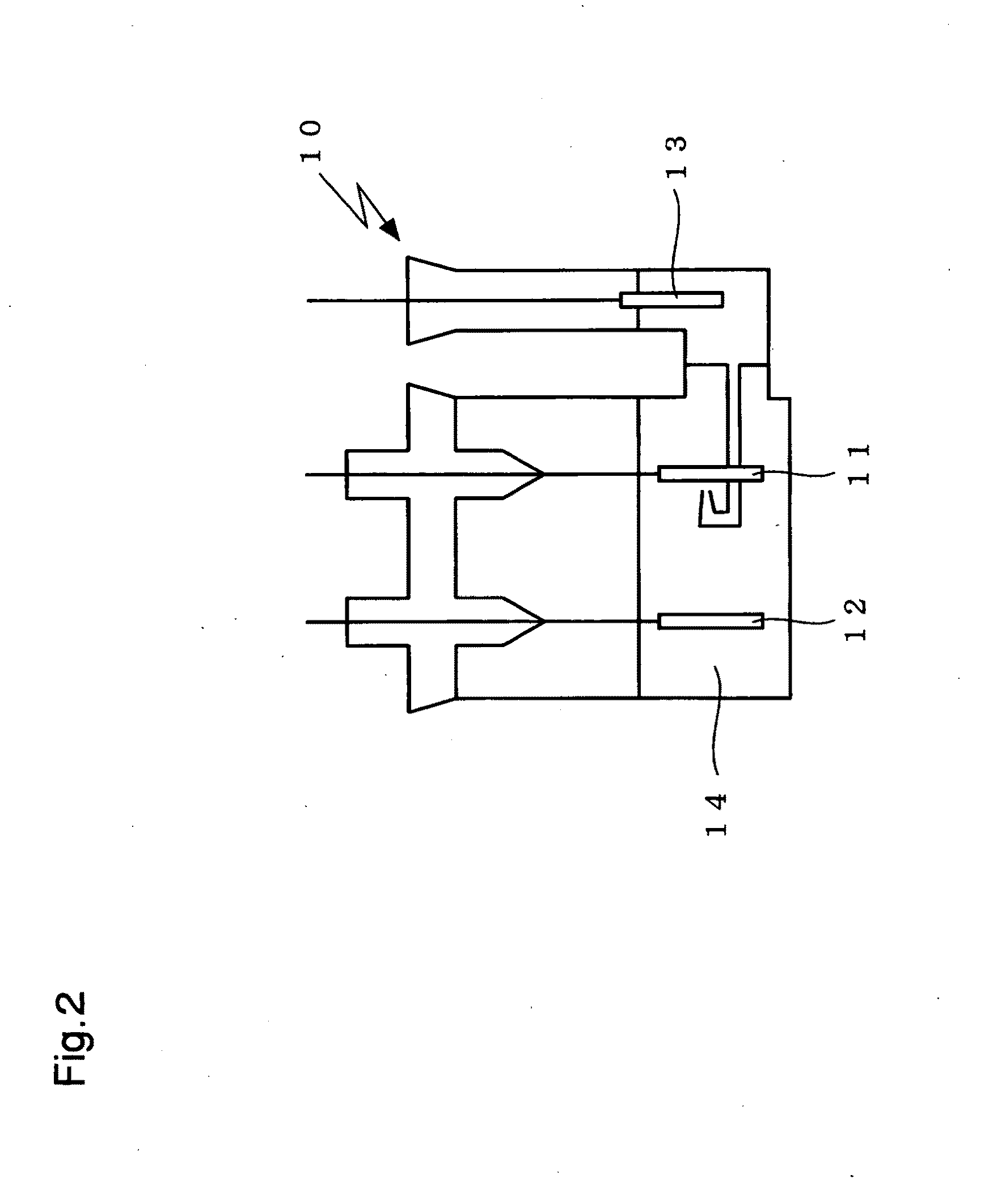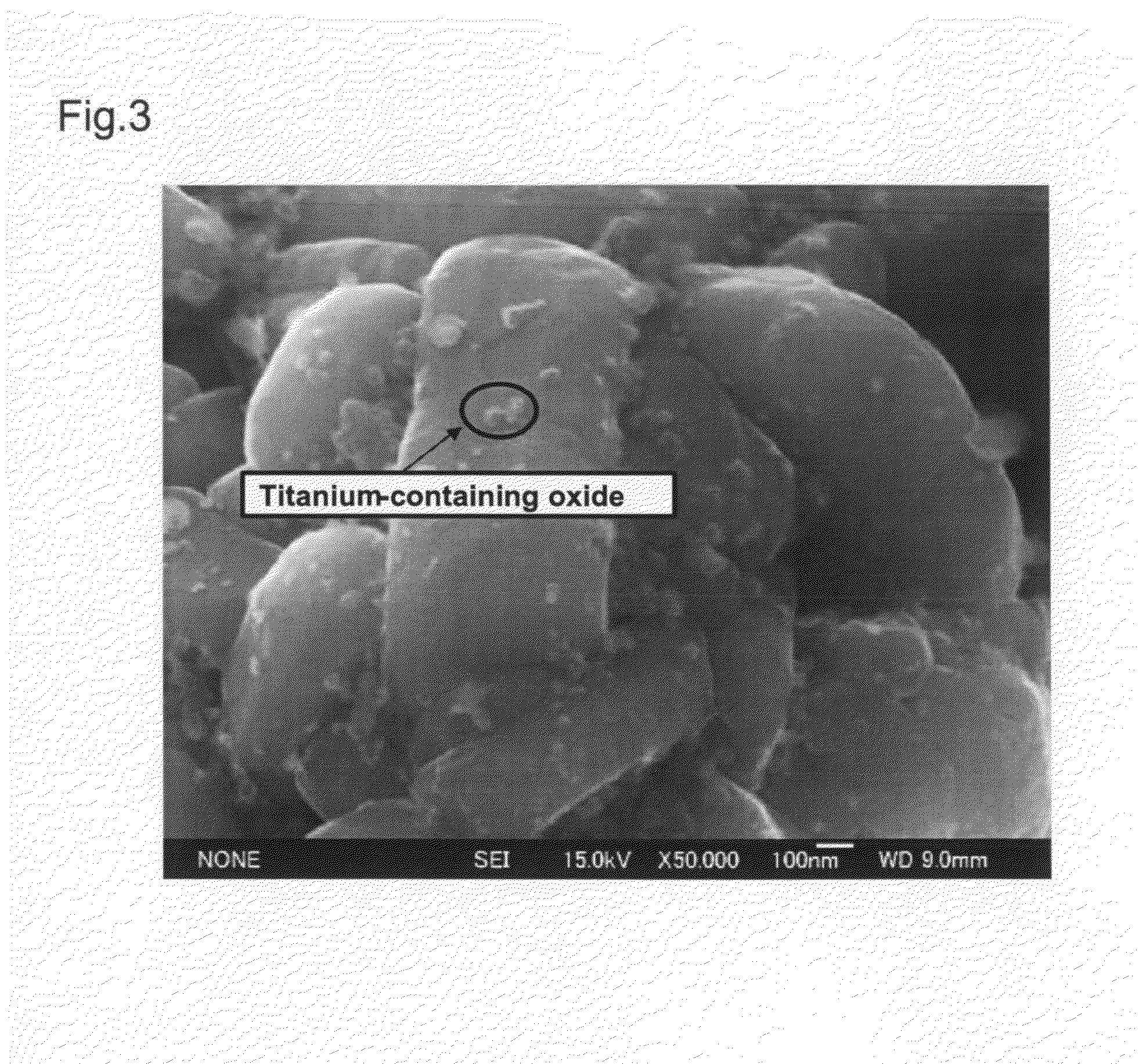Non-aqueous electrolyte secondary battery and method of manufacturing the same
a non-aqueous electrolyte, secondary battery technology, applied in the direction of cell components, electrochemical generators, nickel compounds, etc., can solve the problems of increasing power consumption of such devices, high cost, and type of non-aqueous electrolyte secondary batteries, and achieves stable crystal structure, improved high-rate charge-discharge capability, and low viscosity
- Summary
- Abstract
- Description
- Claims
- Application Information
AI Technical Summary
Benefits of technology
Problems solved by technology
Method used
Image
Examples
example 1
[0048]In Example 1, a positive electrode active material was prepared as follows. Li2CO3 was mixed with Ni0.50Mn0.50(OH)2 obtained by coprecipitation at a predetermined ratio, and the resultant mixture was sintered at 1000° C. in the air so that two elements, Ni and Mn, were the main components of the transition metal elements as shown in the following formula. The resultant layered Li1.06Ni0.47Mn0.47O2 was used as the lithium-containing metal oxide represented by the foregoing general formula. In the Li1.06Ni0.47Mn0.47O2 thus obtained, the primary particles had a volume average particle size of about 1 μm, and the secondary particles had a volume average particle size of about 7 μm.
[0049]The Li1.06Ni0.47Mn0.47O2 was mixed with TiO2 having an average particle size of 50 nm at a predetermined ratio, and thereafter, the mixture was sintered at 700° C. in the air, to prepare a positive electrode active material in which a Ti-containing oxide was sintered on the surface of the Li1.06Ni0...
example 2
[0054]In Example 2, a positive electrode active material was prepared in the same manner described as in Example 1 above, except that the amount of TiO2 having an average particle size of 50 nm, which was mixed with L1.06Ni0.47Mn0.47O2, was made greater. Using the positive electrode active material prepared in this manner, a positive electrode and a three-electrode test cell were prepared in the same manner as described in Example 1 above.
[0055]The amount of titanium in the positive electrode active material prepared in the above-described manner was 0.48 mass %.
[0056]The positive electrode active material prepared in the above-described manner was observed with a scanning electron microscope (SEM). The result is shown in FIG. 3.
[0057]As a result, it was confirmed that, in the positive electrode active material of Example 2 as well, microparticles of the Ti-containing oxide having an average particle size of about 50 nm were sintered on the surface of the Li1.06Ni0.47Mn0.47O2 so tha...
example 3
[0058]In Example 3, a positive electrode active material was prepared in the same manner as described in Example 1, except that Li1.06Ni0.56Mn0.38O2 containing primary particles with a volume average particle size of about 1 μm and secondary particles with a volume average particle size of about 7 μm was used as the lithium-containing metal oxide, to prepare a positive electrode active material in which a Ti-containing oxide was sintered on the surface of Li1.06Ni0.56Mn0.38O2. The amount of titanium in the positive electrode active material thus prepared was 0.24 mass %.
[0059]Using the positive electrode active material prepared in this manner, a positive electrode and a three-electrode test cell were fabricated in the same manner as described in Example 1 above.
PUM
| Property | Measurement | Unit |
|---|---|---|
| volume average particle size | aaaaa | aaaaa |
| volume average particle size | aaaaa | aaaaa |
| volume average particle size | aaaaa | aaaaa |
Abstract
Description
Claims
Application Information
 Login to View More
Login to View More - R&D
- Intellectual Property
- Life Sciences
- Materials
- Tech Scout
- Unparalleled Data Quality
- Higher Quality Content
- 60% Fewer Hallucinations
Browse by: Latest US Patents, China's latest patents, Technical Efficacy Thesaurus, Application Domain, Technology Topic, Popular Technical Reports.
© 2025 PatSnap. All rights reserved.Legal|Privacy policy|Modern Slavery Act Transparency Statement|Sitemap|About US| Contact US: help@patsnap.com



